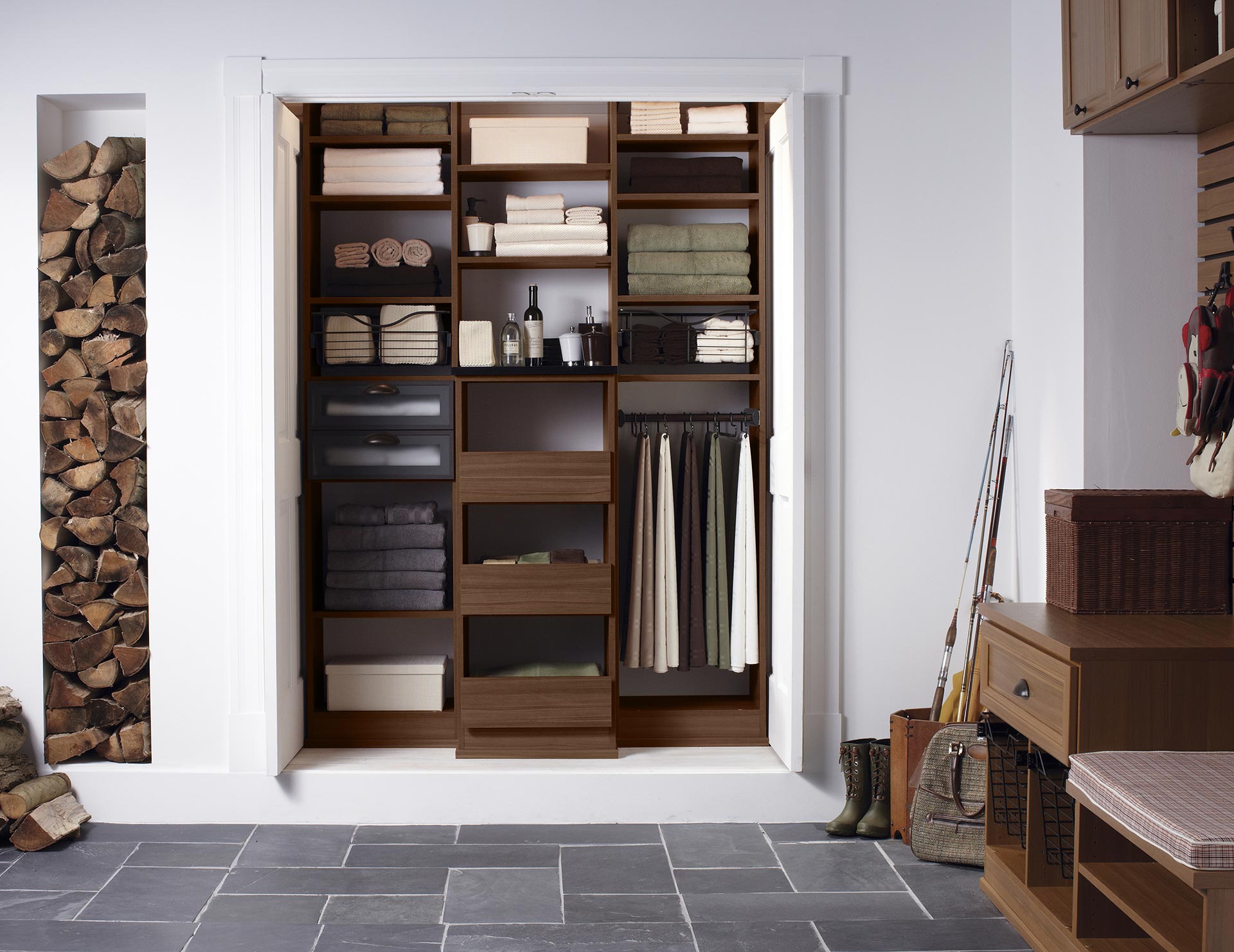

Articles
How To Organize Hall Closet
Modified: August 26, 2024
Discover efficient ways to organize your hall closet with living room storage solutions. Maximize space and keep your belongings neatly arranged.
(Many of the links in this article redirect to a specific reviewed product. Your purchase of these products through affiliate links helps to generate commission for Storables.com, at no extra cost. Learn more)
How to Organize Hall Closet
Having an organized hall closet not only makes your day-to-day life easier but also adds aesthetic appeal to your home. With proper organization, you can easily find what you need, save time, and maintain a clutter-free environment. Follow the steps below to transform your chaotic hall closet into an organized oasis.
Key Takeaways:
- Transform your hall closet into an organized oasis by clearing out the space, assessing available dimensions, choosing suitable storage containers, and creating zones for different items. Utilize vertical and shelf space to maximize storage capacity.
- Maintain organization by regularly decluttering, reorganizing, and creating a system for returning items to their designated places. Enjoy the benefits of easy access, time-saving, and a clutter-free home!
Clearing out the closet
Start by completely emptying your hall closet. Remove everything, including coats, shoes, accessories, and miscellaneous items. This allows you to assess the space and start fresh. Once the closet is empty, sort the items into different categories, such as coats, shoes, bags, and hats.
Assessing the available space
Measure the dimensions of your hall closet to determine the available space. This step helps you identify potential storage solutions that fit perfectly. Consider using closet organizers, shelves, hooks, or baskets to maximize the space efficiently.
Choosing storage containers
Select suitable storage containers for different items in your hall closet. Use sturdy bins or boxes for items that need to be protected, such as hats or delicate accessories. Opt for transparent containers for easy identification. Don’t forget to choose containers that fit well on the shelves or inside the closet.
Categorizing and labeling items
Create categories for the belongings in your hall closet. This could include sections for coats, shoes, bags, and accessories. Label each container or shelf to make it easier to find and return items to their specific places. This not only maintains organization but also saves you time in the long run.
Read more: How To Organize Shorts In A Closet
Creating zones
Designate specific areas or zones within your hall closet for different types of items. For example, reserve one section for coats, another for shoes, and another for bags. This ensures that each item has its own designated space, making it easier to find and maintain organization.
Utilizing vertical space
Make the most of the vertical space in your hall closet. Install hooks or rods on the walls or the back of the door to hang coats, scarves, or bags. Use over-the-door organizers for shoes or accessories. By utilizing vertical space, you can free up shelf space and maximize storage capacity.
Maximizing shelf space
Fold and stack items neatly on the shelves to maximize space. Consider using storage bins or baskets to group smaller items or accessories together. Utilize dividers or shelf organizers to create separate sections for different categories of items.
Tips for maintaining organization
To ensure long-term organization, regularly declutter your hall closet. Donate or toss items you no longer use or need. Implement a system for returning items to their designated places after use. This helps prevent clutter from accumulating and keeps your hall closet organized in the long run.
By following these steps and maintaining a consistent organizational system, your hall closet will transform into an efficient and visually appealing space. Enjoy the benefits of easy access, time-saving, and a clutter-free home!
Read more: How To Organize Pants In A Closet
Introduction – Importance of Organizing the Hall Closet
An organized hall closet can make a significant difference in your daily life. It’s a space that often gets neglected, but with proper organization, it can streamline your day-to-day routine and improve the overall functionality of your home. From easily finding your favorite coat to having a designated place for your shoes and accessories, an organized hall closet offers numerous benefits. Let’s explore the importance of organizing your hall closet and how it can positively impact your lifestyle.
One of the primary reasons for organizing your hall closet is to save time. How many times have you rummaged through your closet searching for a specific item, only to realize it’s buried under a pile of other things? With a well-organized closet, you can quickly locate what you need without wasting precious minutes searching through clutter.
Not only does an organized hall closet save time, but it also reduces stress. Coming home after a long day and struggling to find your coat or shoes adds unnecessary frustration to your routine. By organizing your closet, you create a calming and inviting space where everything has its rightful place, allowing you to start and end your day on a positive note.
In addition to saving time and reducing stress, an organized hall closet can improve the aesthetics of your home. When you have a designated spot for each item, the closet looks tidy and visually appealing. It adds a sense of order and cleanliness to your entryway, leaving a positive impression on both you and your guests.
Another crucial aspect of an organized hall closet is that it helps preserve the lifespan of your belongings. When items are tossed haphazardly into the closet, they can get damaged or wrinkled. By organizing your closet and using appropriate storage containers, you ensure that your coats, shoes, and accessories stay in good condition for a longer time.
Lastly, an organized hall closet fosters a sense of control and efficiency in your life. Knowing where everything is and having easy access to your belongings allows you to be more efficient in your daily routines. It eliminates the frustrating feeling of running late because you couldn’t find your keys or a matching pair of gloves.
By recognizing the importance of organizing your hall closet, you can reap these benefits and transform it from a chaotic mess into a functional and visually pleasing space. The rest of this guide will provide you with practical tips and steps to help you achieve a well-organized hall closet that enhances your daily life.
Use storage bins or baskets to group similar items together, such as hats, scarves, and gloves. Install hooks for hanging coats and bags, and use shelf dividers to keep items neatly separated.
Clearing out the Closet – Removing all Items from the Closet – Sorting Items into Categories
When it comes to organizing your hall closet, the first step is to clear out the space completely. This allows you to assess the current state of your closet and start with a clean slate. Removing all items from the closet also gives you the opportunity to sort and categorize your belongings effectively. Let’s discuss the importance of these steps and how to go about clearing out and sorting your closet.
Clearing out the closet involves taking out every single item, from coats and shoes to accessories and miscellaneous items. By emptying the closet, you can see everything at once, making it easier to assess the space and plan for a more efficient organization system.
As you remove items from the closet, it’s important to sort them into categories. This step helps you declutter and identify items that you no longer need or use. You can create categories based on the type of item, such as coats, shoes, bags, hats, or accessories.
Sorting items into categories serves several purposes. Firstly, it helps you identify any duplicates or excessive items. You might realize that you have multiple coats or pairs of shoes that you no longer wear or need. By decluttering and keeping only what you actually use, you can free up valuable space in your hall closet.
Secondly, sorting items into categories allows you to assess the quantity of each category. For example, you might discover that you have more coats than you have hangers or shelf space for. This realization highlights the need for better organization and storage solutions, such as investing in additional hangers, hooks, or shelves to accommodate your belongings properly.
A third benefit of sorting items into categories is that it makes it easier to find and retrieve your belongings. Once you have designated spaces for coats, shoes, and accessories, you can quickly locate the item you need without digging through a jumble of different items. This not only saves time but also ensures that your belongings are properly stored and protected.
When sorting your items into categories, you can use temporary containers or bins to hold the different categories until you’re ready to organize them back into the closet. This interim stage allows you to assess the available space and plan the layout of your hall closet more effectively.
By clearing out the closet and sorting your items into categories, you lay the foundation for a well-organized hall closet. The next steps will involve assessing the available space, choosing suitable storage containers, and implementing an efficient organization system. Stay tuned for more valuable tips on organizing your hall closet!
Assessing the Available Space – Measuring the Closet Dimensions – Identifying Potential Storage Solutions
Once you have cleared out your hall closet and sorted your items into categories, the next step in organizing your closet is to assess the available space. This involves measuring the closet dimensions and identifying potential storage solutions that will maximize the functionality and efficiency of your closet. Let’s dive into the importance of assessing the space and how to go about it.
Measuring the dimensions of your hall closet is crucial in determining how much space you have to work with. Measure the width, height, and depth of the closet, as well as any alcoves, corners, or irregularities. Accurate measurements will help you determine the appropriate storage solutions that will fit perfectly and make the most efficient use of the space.
After measuring the closet dimensions, it’s time to identify potential storage solutions. Consider the specific needs of your belongings and think about the best ways to organize them within the space. Some potential storage solutions for a hall closet include:
- Shelves: Installing shelves is a great way to utilize vertical space in your closet. You can use them to store folded clothing items, bins, or baskets.
- Hooks: Adding hooks to the walls or back of the door is an excellent option for hanging coats, bags, or scarves. Hooks are space-efficient and make it easy to access frequently used items.
- Rods: Installing a rod or multiple rods within your closet provides a dedicated space for hanging coats, dresses, or formal attire.
- Over-the-door organizers: Utilize the back of the closet door with over-the-door organizers, which can hold shoes, accessories, or smaller items.
- Baskets or bins: Using baskets or bins on the shelves or the floor of your closet can help corral smaller items, such as hats, gloves, or miscellaneous accessories.
- Dividers or drawer inserts: If your hall closet has drawers, consider using dividers or drawer inserts to separate and organize items like socks, belts, or smaller accessories.
When identifying potential storage solutions, keep in mind the specific needs of your belongings and the available space in your hall closet. Choose options that will provide easy access, protect your items, and maximize the available space efficiently.
It’s also important to consider the durability and functionality of the storage solutions you choose. Opt for sturdy and high-quality materials that will withstand the weight of your items and the wear and tear of everyday use. Functionality is key in ensuring that the storage solutions you select cater to your specific needs and make organizing and retrieving items a seamless experience.
By assessing the available space in your hall closet, measuring the dimensions accurately, and identifying potential storage solutions, you are setting the stage for a well-organized closet that optimizes functionality and maximizes space utilization. The subsequent steps will involve selecting suitable storage containers, categorizing and labeling items, and creating zones within your hall closet. Stay tuned for more valuable tips on organizing your space!
Choosing Storage Containers – Selecting the Right Containers for Different Items – Considering Durability and Functionality
When it comes to organizing your hall closet, selecting the right storage containers is key to maintaining a tidy and efficient space. The right containers not only help keep your items organized but also protect them from damage. In this step, we will discuss the importance of choosing the appropriate storage containers for different types of items and considerations for their durability and functionality.
The first consideration when choosing storage containers is to match them with the specific items they will hold. Different types of items require different storage solutions. For example, use a sturdy box with a lid to store hats or delicate accessories, ensuring their protection from dust, humidity, or any potential damage. Opt for hangers or garment bags for coats and dresses to keep them wrinkle-free and easily accessible.
When selecting storage containers, it’s important to consider their durability. Look for containers made from sturdy materials that can withstand the weight of the items they will hold, as well as any wear and tear. Plastic bins or boxes are a popular choice for general storage needs, as they are lightweight, durable, and easy to clean.
Functionality is another crucial aspect to consider when choosing storage containers. Look for containers that are easy to use, stackable for efficient space utilization, and have handles for easy transportation. In the case of storage boxes or bins, consider ones with clear sides or labels for easy identification of contents. This makes it effortless to locate specific items without having to dig through multiple containers.
Moreover, it’s important to consider the size of the containers in relation to the available space in your hall closet. Choose containers that fit well on shelves or inside the closet without wasting any valuable space. Measure your shelves or available areas beforehand to ensure a proper fit and optimal storage capacity.
When organizing your closet, you may want to mix and match different storage containers to accommodate various item types and sizes. For example, use smaller bins or baskets for smaller accessories like gloves or scarves and larger containers for bulky items like boots or handbags. This allows for a customized and efficient storage system tailored to your specific needs.
Lastly, don’t forget aesthetics. While choosing functional storage containers is essential, selecting ones that aesthetically complement your space can enhance the overall look of your hall closet. Look for containers that come in colors or designs that match your personal style or the theme of your home.
By selecting the right storage containers for different items, considering their durability and functionality, you can create an organized hall closet that not only looks appealing but also protects and neatly stores your belongings. The next steps will involve categorizing and labeling items, creating zones within your closet, and maximizing vertical and shelf space. Stay tuned for more valuable tips on organizing your hall closet!
Read more: How To Organize A Utility Closet
Categorizing and Labeling Items – Creating Categories for Organizing Belongings – Labeling Containers or Shelves for Easy Identification
Once you have chosen the appropriate storage containers for your hall closet, the next step is to categorize and label your items. Categorizing your belongings and labeling containers or shelves play a crucial role in maintaining an organized and functional space. In this step, we will explore the importance of categorization and labeling, as well as offer tips on how to implement these practices effectively.
Categorization serves as a roadmap for organizing your belongings in a logical and systematic manner. It allows you to group similar items together, making it easier to find and store them. When categorizing, consider the different types of items you have in your hall closet, such as coats, shoes, bags, hats, or accessories.
Create clear and distinct categories to group similar items together. For example, designate a section for coats, which may include subcategories for winter coats, rain jackets, or formal coats. For shoes, consider categorizing them by style, such as boots, sneakers, or heels. Creating categories based on the specific needs of your belongings will help streamline the organization process.
Once you have established the categories, proceed to label the containers or shelves in your hall closet. Labeling is essential for easy identification and quick access to your belongings. Use labels that are clear, visible, and easy to read. You can use adhesive labels or label maker to create professional-looking labels.
When labeling containers, be sure to include the category name and any additional details that may be helpful, such as a brief description or the names of specific items contained within. If using shelves, label them accordingly to indicate the type of items stored on each shelf. For example, label one shelf as “Coats” and another as “Shoes.”
Labeling not only helps you easily locate specific items but also facilitates putting items back in their designated places. It serves as a gentle reminder and encourages everyone in the household to maintain the organization system. Additionally, labeling reduces the likelihood of items getting mixed up or misplaced.
Remember to review and update the labels periodically. As your needs change or you acquire new items, adjust the categories and labels accordingly. This ensures that your organization system remains up-to-date and continues to serve your needs effectively.
Implementing categorization and labeling practices creates a cohesive and structured environment in your hall closet. It offers convenience, efficiency, and peace of mind, knowing that your belongings are neatly organized and easily accessible. The next steps will involve creating zones within your closet, utilizing vertical and shelf space effectively, and implementing maintenance strategies. Stay tuned for more valuable tips on organizing your hall closet!
Creating Zones – Designating Separate Sections for Specific Items – Allocating Space for Coats, Shoes, Accessories, etc.
Creating zones within your hall closet is a fundamental step in achieving optimal organization. By designating separate sections for specific items and allocating space accordingly, you can ensure that everything has its rightful place, making it easier to find and maintain order. In this step, we will explore the importance of creating zones, how to designate sections for different item categories, and tips for allocating space effectively.
The concept of creating zones involves dividing your hall closet into designated areas or sections for different types of items. This not only enhances organization but also makes it easier to visually navigate your closet and locate specific items. Common zones in a hall closet may include sections for coats, shoes, bags, hats, or accessories.
Start by assessing the size and layout of your closet. Identify the areas that can be effectively utilized for each item category. For example, allocate a specific rod or area for hanging coats and jackets. Reserve a shelf or stackable storage bins for shoes. Dedicate a drawer or compartment for accessories such as hats, gloves, or scarves.
When creating zones, consider the frequency of use and accessibility of items. Place frequently used items within easy reach, while those used less often can be stored in higher or harder-to-reach areas. This ensures that the items you need most frequently are easily accessible and readily available.
Organization and consistency are key when creating zones within your hall closet. Designate specific sections for specific items and stick to this system. Avoid mixing different categories within the same zone, as this can create confusion and make it harder to maintain organization in the long run.
Utilize dividers or separators to visually separate different zones within your closet. This can be as simple as using tension rods to create vertical barriers or installing shelf dividers to keep categories separate. These physical dividers help maintain the integrity of the zones and prevent items from intermingling.
Consider the size and quantity of items in each category when allocating space. Ensure that there is enough room for each item to be neatly stored without overcrowding. Proper spacing allows for easy retrieval and prevents items from getting damaged or creased.
Don’t forget to make use of vertical and unused space within your hall closet. Install hooks on walls or the back of the door to hang bags, scarves, or belts. Utilize the vertical space for additional shelving or rod placement. Over-the-door organizers can be attached to store smaller accessories or shoes.
Creating zones and allocating space within your hall closet not only enhances organization but also adds visual appeal to your space. Designating separate sections for specific items ensures that everything has its own place, making it easier to find and maintain order. The next steps will involve maximizing vertical and shelf space, utilizing storage solutions effectively, and tips for maintaining organization. Stay tuned for more valuable tips on organizing your hall closet!
Utilizing Vertical Space – Installing Hooks or Rods for Hanging Items – Using Over-the-Door Organizers
When organizing your hall closet, it’s important to make the most of the available vertical space. This allows you to efficiently utilize the closet’s height and maximize storage capacity. By installing hooks or rods for hanging items and using over-the-door organizers, you can take advantage of the vertical space and keep your belongings easily accessible. Let’s explore the benefits of utilizing vertical space and how to go about it.
Installing hooks or rods in your hall closet offers a practical and efficient way to hang items such as coats, bags, scarves, or belts. By utilizing the vertical space on the walls or back of the closet door, you free up valuable shelf or floor space for other storage needs.
When installing hooks, choose sturdy, wall-mounted hooks that can support the weight of the items you intend to hang. Position the hooks at appropriate heights for easy access and ensure that they are securely fastened to the wall or door. Hooks are ideal for frequently used items that you want to keep within reach.
Rods serve as an excellent solution for hanging longer items, such as coats, dresses, or formal attire. Depending on the height of your closet, you can install a single rod or multiple rods at different levels to maximize hanging space. Utilize appropriate hangers to keep your clothing items wrinkle-free and well organized.
Over-the-door organizers are a versatile storage solution that makes clever use of the space behind your closet door. They typically feature pockets or compartments that are perfect for storing small accessories, such as hats, gloves, scarves, or even shoes. Over-the-door organizers are easy to install and remove, and they keep your belongings visible and easily accessible.
When choosing over-the-door organizers, make sure they are durable and made of quality materials. Consider the size and number of pockets or compartments you need, based on the specific accessories you plan to store. Opt for clear pockets or compartments if you want to easily see what’s inside without opening each one.
Utilizing vertical space not only increases storage capacity but also allows for a more efficient and organized hall closet. It keeps frequently used items within reach, makes it easier to locate items at a glance, and helps eliminate clutter on shelves or the floor.
Remember to consider the weight limit of the hooks or rods, and avoid overloading them to prevent any damage or accidents. Regularly assess the condition of the hooks or rods and ensure they remain securely attached to the wall or door.
By incorporating hooks or rods for hanging items and using over-the-door organizers, you can create a well-organized hall closet that maximizes vertical space. The subsequent steps will involve maximizing shelf space, choosing appropriate storage containers, and implementing maintenance strategies to keep your closet organized. Stay tuned for more valuable tips on organizing your hall closet!
Maximizing Shelf Space – Folding and Stacking Items Neatly – Utilizing Storage Bins or Baskets
When organizing your hall closet, maximizing shelf space is essential for efficient storage and easy access to your belongings. By folding and stacking items neatly and utilizing storage bins or baskets, you can optimize shelf space and maintain a clutter-free closet. Let’s explore the importance of maximizing shelf space and how to go about it.
Folding and stacking items neatly is a key strategy for maximizing shelf space in your hall closet. Properly folding clothing items, such as sweaters, t-shirts, or pants, allows you to fit more items on a single shelf while keeping them organized and visible. Utilize techniques like the KonMari method or Marie Kondo’s folding techniques to maximize space and reduce clutter.
When folding your clothing items, ensure that they are neatly folded with smooth edges and uniform sizes. This makes it easier to stack them and retrieve a specific item without disrupting the rest. Group similar items together, such as stacking all sweaters or t-shirts in one stack, to further streamline organization.
Another effective way to maximize shelf space is by utilizing storage bins or baskets. These containers help corral smaller items and keep them organized within the closet. Opt for bins or baskets that fit perfectly on the shelves, ensuring no wasted space. Choose containers with lids for items that need protection or opt for open baskets for easy access to frequently used items.
When using storage bins or baskets, take advantage of their stackability. Stack multiple bins or baskets on top of each other to utilize vertical space and create a neater and more organized appearance. This also helps keep related items within the same container and prevents them from getting mixed up.
Consider categorizing items within storage bins or baskets to maintain order and ease of retrieval. For example, use separate bins for accessories like hats, gloves, and scarves. Label these bins accordingly to easily identify and locate specific items. Use clear bins or baskets if you prefer visibility of the contents without having to open each container.
Utilizing storage bins or baskets not only maximizes shelf space but also protects your belongings from dust or damage. They keep similar items together, making it easier to find what you need without having to search through a jumble of different items. This promotes a more organized and visually appealing closet.
Remember to measure your shelves carefully to ensure the storage bins or baskets you choose fit properly. A proper fit prevents wasted space and allows for seamless stacking and organization.
By maximizing shelf space through neat folding and stacking and utilizing storage bins or baskets, you can create a well-organized hall closet that optimizes storage capacity and maintains a clutter-free environment. The next steps will involve tips for maintaining organization, regular decluttering, and implementing an effective system for returning items to their designated places. Stay tuned for more valuable tips on organizing your hall closet!
Read more: How To Organize Coat Closet
Tips for Maintaining Organization – Regularly Decluttering and Reorganizing the Closet – Creating a System for Returning Items to Their Designated Places
Maintaining the organization of your hall closet is just as important as the initial organization process. By regularly decluttering and reorganizing your closet and creating a system for returning items to their designated places, you can ensure that your hall closet remains orderly and functional over time. Here are some valuable tips to help you maintain organization:
Regularly Declutter: Set aside time periodically to declutter your hall closet. This helps prevent unnecessary items from accumulating and taking up valuable space. Assess each item and ask yourself if it is still useful, needed, or brings you joy. Donate or discard items that no longer serve a purpose in your life.
Reorganize as Needed: Over time, your needs and preferences may change, and your hall closet organization should evolve accordingly. Take the opportunity to reevaluate your storage solutions, making adjustments and improvements as necessary. Consider whether items can be better categorized or if new storage containers are required to accommodate changing needs.
Create an Item Return System: Establish a system for returning items to their designated places after use. This ensures that everything is put back in its rightful spot, minimizing clutter and maintaining organization. Encourage all household members to follow this system consistently. For example, designate a specific bin or tray near the closet entrance for placing items that need to be returned to the closet but are not urgent. Schedule regular “return items” sessions to retrieve those items and put them back in their proper places.
Set Maintenance Routines: Implement maintenance routines to keep your hall closet organized. This can include daily habits like quickly hanging up coats or returning shoes to their designated spots. Make it a routine to straighten up the closet before you go to bed or as part of your regular cleaning schedule. Consistency in maintaining organization ensures that your efforts are sustained in the long run.
Perform Seasonal Swaps: Consider performing seasonal swaps in your hall closet. As the seasons change, rotate your coats, shoes, or accessories to reflect the current needs. Store off-season items in a separate designated area, such as a storage bin or closet, to free up space for the items you’ll be using regularly. This rotation helps keep the closet organized and prevents overcrowding.
Label and Maintain Visibility: Ensure that labels on storage containers or shelves remain visible and legible. Over time, labels may fade or become unclear, so periodically check and touch up labels as needed. This maintains clarity and helps everyone in the household easily identify where items belong, promoting consistent organization.
Practice One In, One Out: To prevent your hall closet from becoming overcrowded, adopt a “one in, one out” policy. Whenever you purchase a new item, make it a rule to remove and donate or discard an existing item. This allows you to keep the closet organized and prevents unnecessary accumulation of items.
Regularly Assess Functionality: Regularly assess the functionality of your current storage solutions and make adjustments as necessary. Consider whether the current setup is working effectively for your needs. Perhaps you need to add additional shelving, hooks, or storage containers to further enhance organization.
By incorporating these tips into your routine, you can maintain the organization of your hall closet and enjoy its functionality over an extended period. Remember, consistency is key. Small, regular efforts will go a long way in preserving an organized space.
With the tips and strategies discussed in this guide, you are equipped to transform your hall closet into a well-organized and efficient space. Enjoy the benefits of easy access, time-saving, and a clutter-free home!
Conclusion – Recap of Key Steps for Organizing a Hall Closet – Benefits of Maintaining an Organized Space
Organizing your hall closet is a significant undertaking, but the benefits of a well-organized space are well worth the effort. Throughout this guide, we have discussed various key steps to help you achieve an organized hall closet. Let’s recap those steps and highlight the benefits of maintaining an organized space.
To organize your hall closet effectively, start by clearing out the closet completely and sorting items into categories. This allows you to assess the available space and plan for storage solutions that fit your needs. Measure the closet dimensions and identify potential storage solutions such as hooks, rods, shelves, or over-the-door organizers. Choose suitable storage containers for different items and consider their durability and functionality.
Categorize and label your belongings to create a systematic approach to organization. By designating separate zones for specific items and allocating space for coats, shoes, accessories, and more, you can quickly locate what you need and maintain order. Utilize vertical space by installing hooks or rods for hanging items and making use of over-the-door organizers.
Maximize shelf space by folding and stacking items neatly. Utilize storage bins or baskets to corral smaller items and keep them organized. Regularly declutter and reorganize the closet to prevent accumulation of unnecessary items and make adjustments as needed. Create a system for returning items to their designated places and establish maintenance routines to keep your hall closet organized.
The benefits of maintaining an organized space in your hall closet are numerous. Firstly, it saves you time by allowing you to quickly locate and retrieve items without rummaging through clutter. It reduces stress by providing a calm and visually appealing environment. By keeping your belongings neatly organized, it enhances the aesthetics of your home.
An organized hall closet also helps to preserve and protect your belongings. It ensures that items are stored properly, preventing damage or wrinkling. Additionally, maintaining organization enables you to make better use of limited space, maximizing your storage capacity.
By practicing maintenance and sustaining organization in your hall closet, you create a more efficient daily routine. Knowing where everything is and having a designated place for each item allows you to start and end your day with ease.
Lastly, an organized hall closet instills a sense of control and order in your life. It frees up mental space and reduces the frustration of searching for items or feeling overwhelmed by clutter. You’ll experience the benefits of a well-organized space not only in your hall closet but also in your overall mindset and approach to daily living.
By following the steps outlined in this guide and consistently maintaining organization, you can transform your hall closet into a functional, efficient, and visually appealing space. Enjoy the benefits of easy access, time-saving, and a clutter-free home!
Frequently Asked Questions about How To Organize Hall Closet
Was this page helpful?
At Storables.com, we guarantee accurate and reliable information. Our content, validated by Expert Board Contributors, is crafted following stringent Editorial Policies. We're committed to providing you with well-researched, expert-backed insights for all your informational needs.
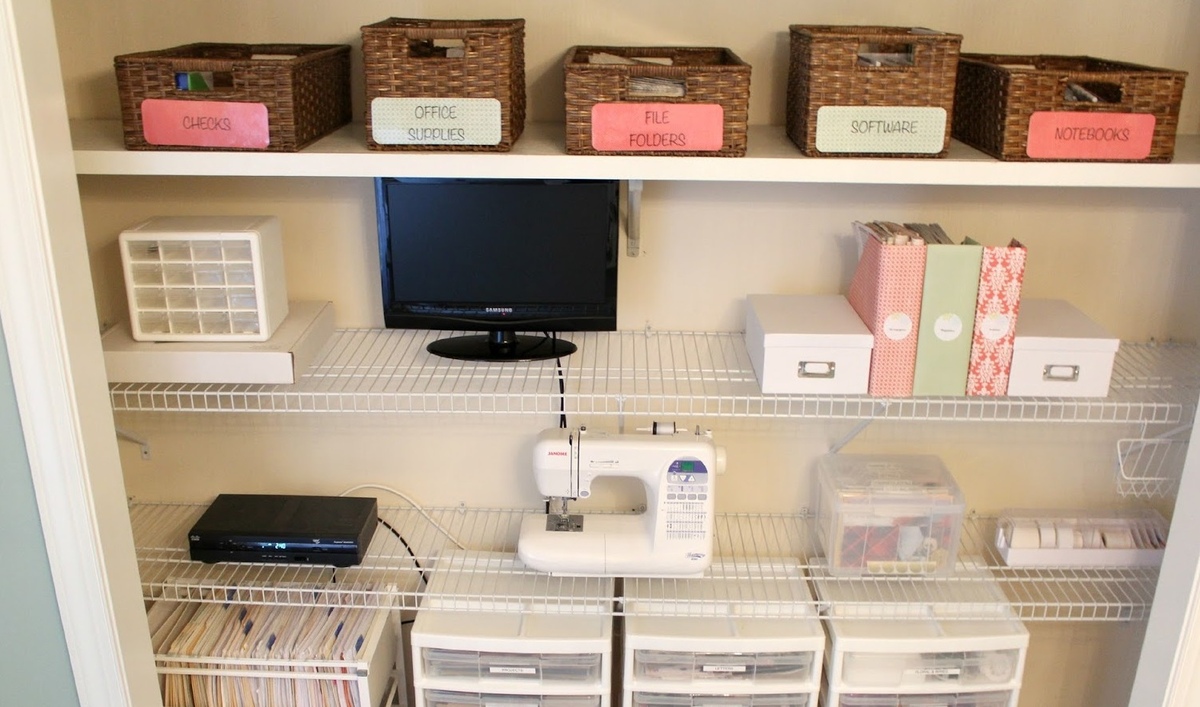

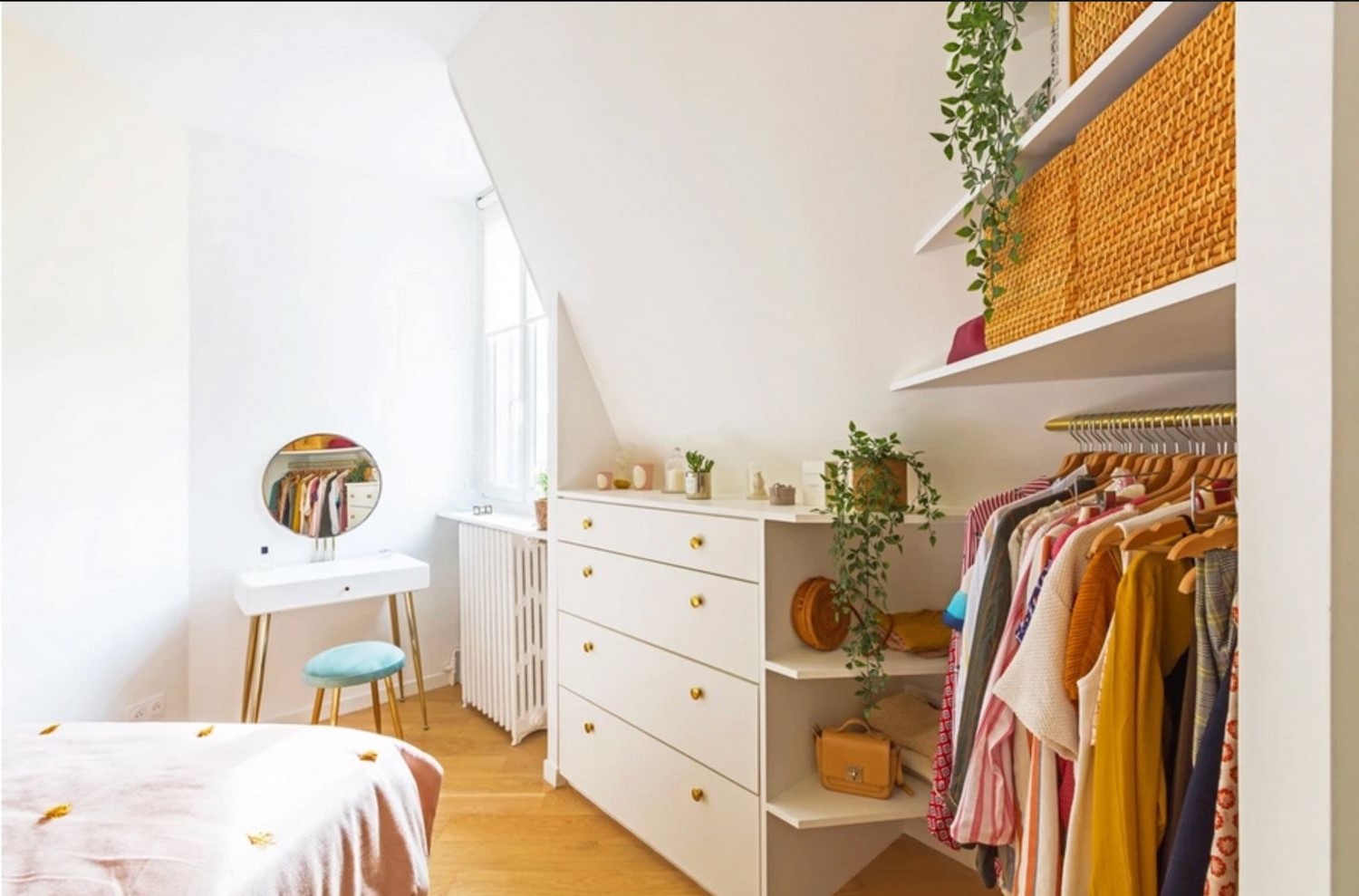

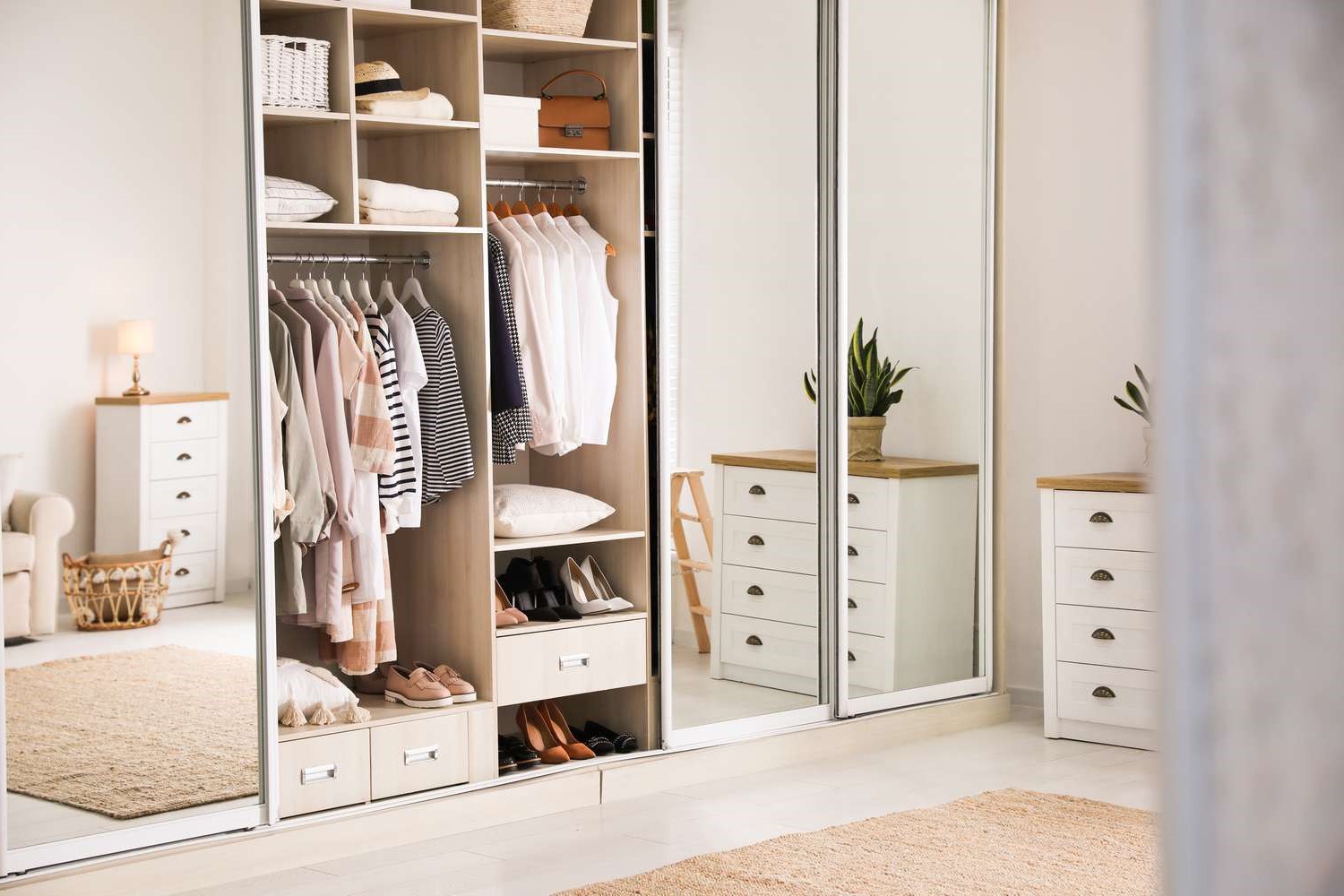
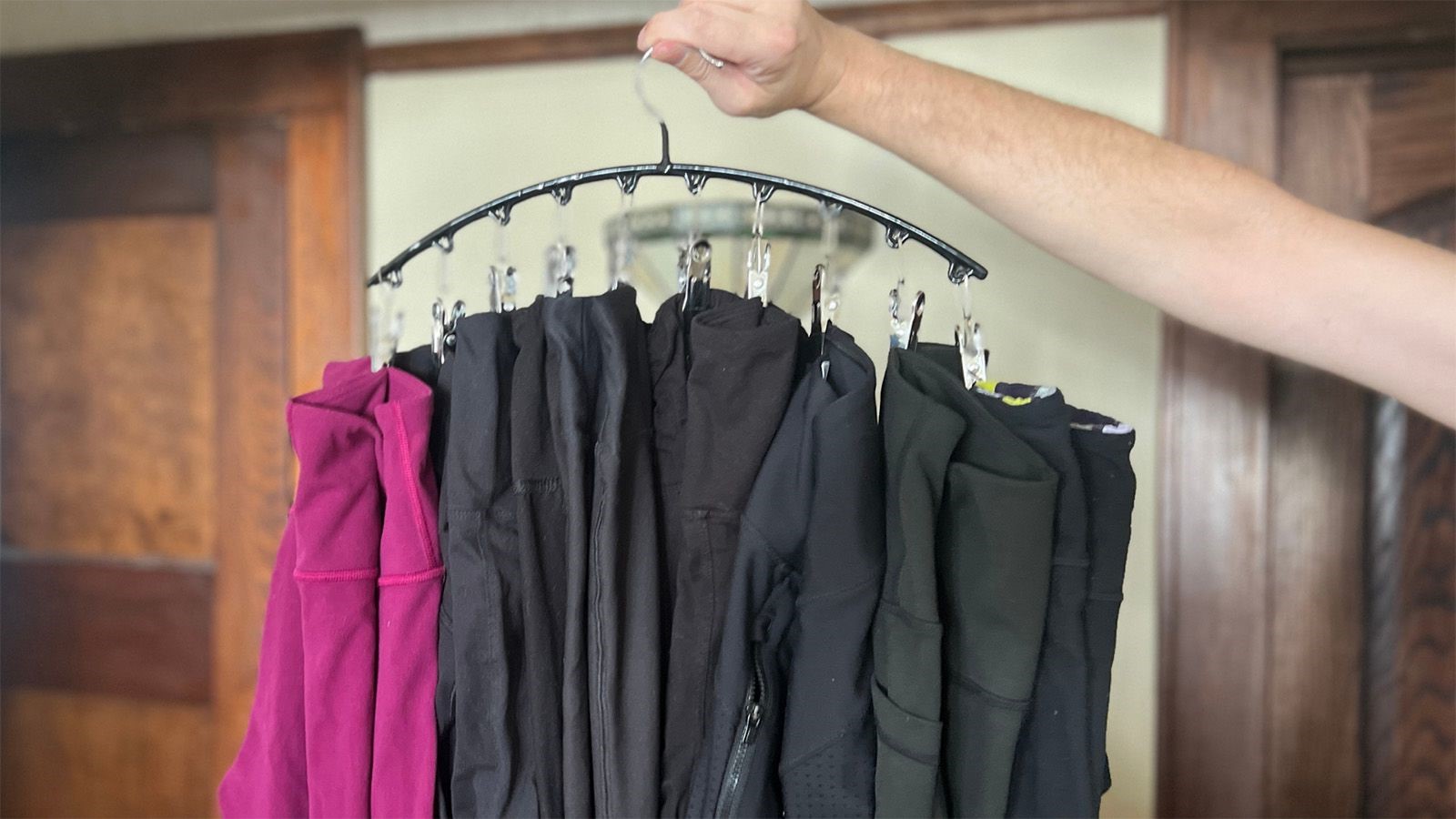


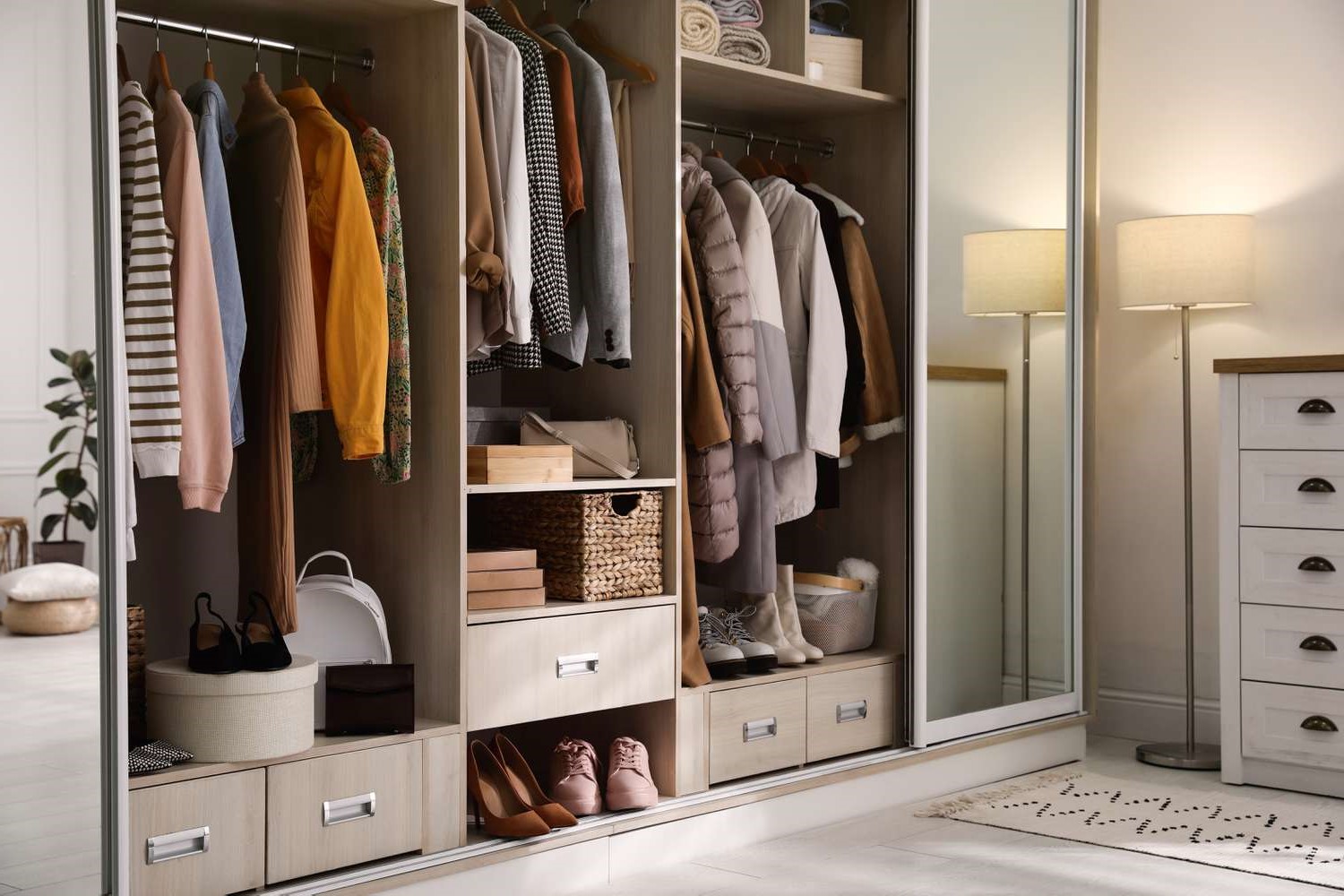
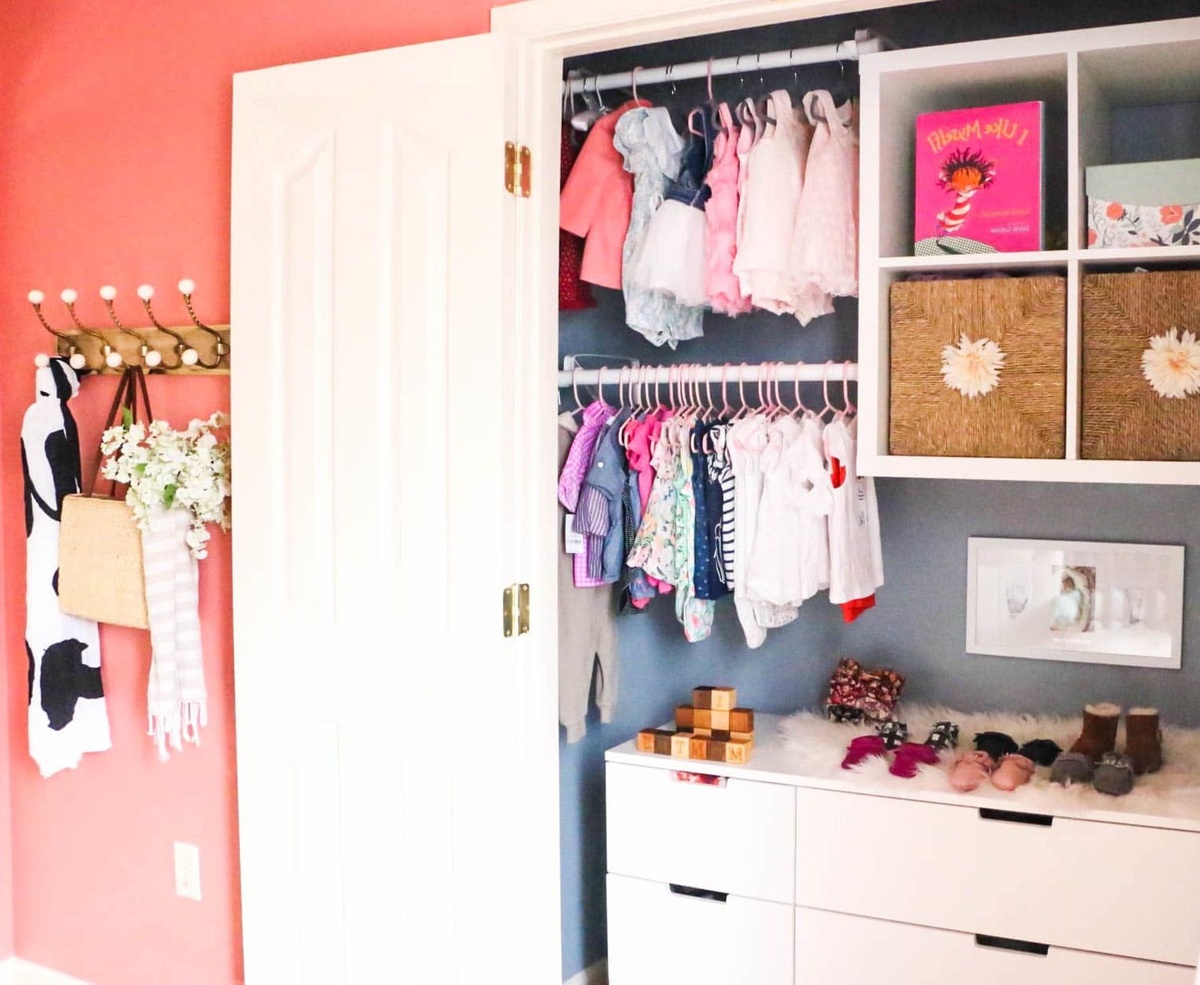


0 thoughts on “How To Organize Hall Closet”